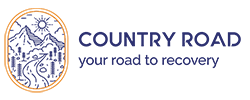Individuals who have experienced trauma are more likely to struggle with addiction issues. Additionally, trauma survivors are also more likely to develop PTSD. These two disorders are complex and, when intertwined, can have a profound impact on mental health and physical well-being. It also makes treating both concurrently more complicated. In this blog we’ll outline the 5 essential steps to treating PTSD and addiction.
Step 1: Comprehensive Assessment
The beginning of any good treatment plan should consist of a comprehensive clinical assessment. This evaluation will include an individual’s medical history, psychological history, mental health evaluation, substance use history, current condition and history of traumatic experiences. The collection of this information is utilized by the treatment team to tailor a personalized treatment plan that can address addiction and the underlying traumatic conditions responsible.
Step 2: Integrated Treatment
The impact of childhood trauma on the development of PTSD and substance abuse is well documented. These two conditions go hand-in-hand and as such should be treated together. Integrated treatment, also known as dual-diagnosis or co-occurring treatment deals with both conditions simultaneously rather in isolation. Trauma-informed care is a component of integrated treatment and accepts that addiction, in part, is developed as a coping mechanism for PTSD.
Step 3: Evidence-Based Psychotherapy
Psychotherapy has been shown to be effective in treating PTSD and addiction. Two of the most well-used and established approaches are cognitive-behavioral therapy (CBT) and eye movement desensitization and reprocessing (EMDR). Identifying and modifying negative thought patterns and behaviors is the end result of CBT while EMDR is used to process and deal with traumatic memories. Both of these modalities are used in trauma-informed care.
Step 4: Medication-Assisted Treatment (MAT)
Depending on the substance use history and previous attempts are sobriety, medication-assisted treatment may be used to reduce cravings and manage withdrawal symptoms. MAT has proven useful in helping those who struggle with chronic relapse or especially addictive drugs. By removing the physical dependence on drugs and curbing the psychological cravings, individuals are able to focus on their recovery from addiction and PTSD.
Step 5: Support and Aftercare
While treatment is the beginning, aftercare is the continuation. Engaging in social support groups and aftercare treatment plans such as intensive outpatient and/or 12-step programs are crucial for maintaining progress and preventing relapse. These programs foster community, accountability and puts survivors in contact with those who have faced similar challenges and can provide encouragement and motivation.
Following the five steps outlined above can help you or a loved one find the path to recovery and healing. With the right treatment plan, professional help, and ongoing support, those struggling with PTSD and addiction can find peace. If you or someone you know is struggling, call Country Road Recovery today to learn more about integrated treatment therapy for PTSD and addiction.


